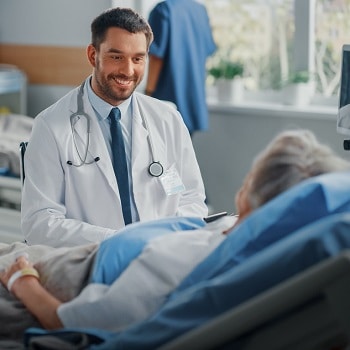The newest participant in the Access Incubator at our Center for Innovation is Capnesity, a company that is developing a capnography Wearable Respiratory Analysis Device.
The device would measure patients’ carbon dioxide levels at home rather than the patient having to stay in the hospital.
Capnesity hopes its product will lead to shorter hospital stays for patients with respiratory conditions like COPD, asthma and pneumonia.
Going home from the hospital after an illness or injury is a major milestone, and the newest Access Incubator participant at Regional One Health’s Center for Innovation is developing a device that could help that achievement come sooner for some patients.

Center for Innovation Director Alejandra Alvarez said the Access Incubator will help evaluate Capnesity’s business case and clinical validation. “The idea is that Capnesity will be able to learn in a real-time setting at Regional One Health,” she said.
Alejandra Alvarez, Center for Innovation Director, said the Access Incubator is working with Capnesity, which is developing a capnography Wearable Respiratory Analysis Device designed to measure patients’ carbon dioxide levels at home rather than in the hospital.
“Capnography is the gold standard for respiratory monitoring. It’s noninvasive and painless, but currently it has to be done in a hospital with the patient connected to a machine,” Alvarez said.
“Sometimes, a patient remains hospitalized only because doctors need to measure their carbon dioxide levels. Capnesity wants to evaluate whether their device can help some patients go home sooner and reduce length of stay.”
Alvarez said the device is a mask, similar to how a CPAP is used for sleep apnea, which patients wear over their nose 24/7 during their prescribed monitoring period.
“If you’re at home and your carbon dioxide reaches a concerning level, the device would send an alert to a platform monitored by your provider,” she said. “If you know your levels are too high, you can take action.”
Remote monitoring of patients with respiratory diagnoses can benefit both patients and health care systems. According to data from Capnesity, respiratory illness causes millions of emergency department visits and hospitalizations every year in the United States:
- COPD: 2.6 million emergency visits, 1.04 million admissions
- Asthma: 1.3 million emergency visits, 439,000 admissions
- Pneumonia: 1.2 million emergency visits, 1 million admissions

Right now, patients have to stay in the hospital for carbon dioxide monitoring. Capnesity hopes its take-home device will allow some patients to get home faster.
Alvarez noted those conditions, along with congestive heart failure, another diagnosis that could benefit from Capnesity’s device, are common in the Mid-South. Therefore, Regional One Health sees a lot of patients who could benefit from at-home respiratory monitoring.
If some of those patients can be discharged and monitored at home, she said, that would free up a room, care providers and other resources for another patient.
With that in mind, Alvarez said the Center for Innovation looks forward to helping Capnesity evaluate various aspects of its device.
Alvarez said the scope will consist of both business case and clinical validation.
That will involve staff in Regional One Health’s pricing and procurement divisions, as well as clinical professionals in pulmonology and emergency medicine who can help answer questions about how the device could be used: When can a patient’s condition be monitored at home rather than in the hospital? Will the device be provided in the hospital or through an outpatient clinic? What type of education do patients need about using the device and reacting to its signals?
The device is in prototype design phase, but once the FDA clears the device, the incubation scope will shift to evaluating the use of the device with providers and patients.
“The idea is that Capnesity will be able to learn in a real-time setting at Regional One Health,” Alvarez said.
She noted that is one of the major benefits of the Access Incubator, which is designed to help validate the accuracy and efficacy of new products and services and help entrepreneurs define their business model.

Capnesity’s device could be used with patients who have common respiratory conditions including COPD, asthma and pneumonia.
Alvarez said she looks forward to adding Capnesity as the first innovation center participant that is working on a device patients take home and use remotely.
“It’s exciting to evaluate a new type of product and work with a company in the telehealth arena, and we look forward to this partnership as a chance to help Capnesity evaluate both their business model and device to see how it can help reduce length of stay for patients,” she said. “This partnership allows us to continue building on our role in the Memphis innovation ecosystem by providing real-world health care access to innovators from all over the country.”

